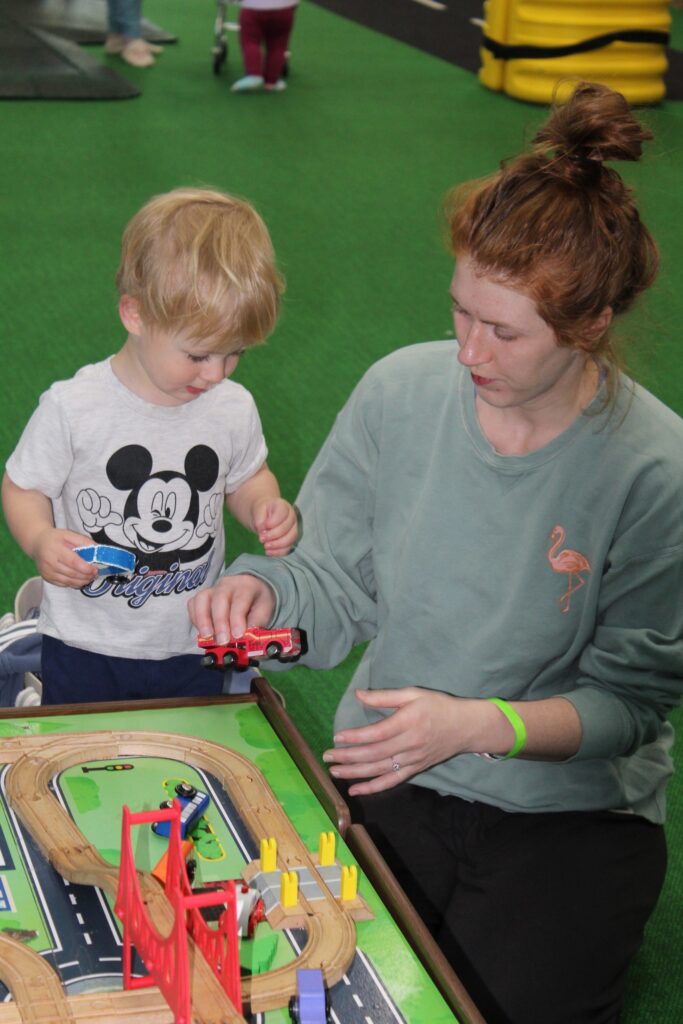Children on the autism spectrum or living with intellectual disabilities often experience the world through heightened or differently tuned senses. Loud noises can feel jarring, bright lights can be overwhelming, and even a light touch can register as too much. The right activities — ones that respect those sensory differences — offer more than fun. They build confidence, improve communication, and help families enjoy quality time together.
Why Sensory-Friendly Experiences Matter
Sensory-friendly activities:
- Ease anxiety: Predictable, low-stimulus environments reduce the fight-or-flight response triggered by unfamiliar sounds, sights, or textures.
- Support developmental goals: Activities tailored to a child’s sensory profile can strengthen motor planning, social interaction, and language skills.
- Encourage inclusion: When children feel safe and regulated, they are more likely to engage with peers and the broader community.
According to the latest CDC estimate, roughly 1 in 31 US children has autism, and many more live with intellectual disabilities. Sensory-aware strategies aren’t niche — they’re essential tools for a growing number of families.
Setting the Stage: Key Principles for Sensory-Friendly Fun
- Start small and scale slowly: Introduce new textures, movements, or sounds one at a time. Gradual exposure builds tolerance without tipping into overload.
- Follow the child’s lead: Observe what sparks joy or prompts withdrawal. Let the child’s cues guide pacing and intensity.
- Build in break zones: Provide a quiet corner with noise-canceling headphones, weighted blankets, or favorite fidgets because even the calmest activity can become too much.
Indoor Sensory-Friendly Activities
DIY Sensory Bins
Fill plastic containers with beans, uncooked rice, or water beads. Hide small toys inside and encourage children to scoop, pour, and search. This activity has benefits for fine motor practice, tactile exploration, and hand-eye coordination.
Light and Shadow Play
Use a dim room, a flashlight, and objects with interesting shapes. Children can project shadows onto a wall or ceiling and tell stories about what they see. This helps with visual tracking, imaginative thinking, and low-light comfort.
Calm-Down Bottle Craft
Combine clear glue, warm water, and glitter in a plastic bottle. When shaken, swirling glitter offers a mesmerizing focus point. This craft promotes self-regulation, slow breathing, and mindfulness.
Outdoor Sensory-Friendly Activities
Nature Sound Walks
Choose a quiet park trail and invite children to list every sound they notice — rustling leaves, distant birds, or crunching gravel underfoot. Use simple recording apps to play the sounds back later. This activity helps with auditory discrimination, language development, and the appreciation of calm environments.
Heavy Work Garden Tasks
Let children carry small watering cans, push soil in a wheelbarrow, or pull lightweight weeds. These kinds of activities build proprioceptive input (body awareness), muscle strength, and practical life skills.
Bubble Painting
Mix washable, non-toxic paint with bubble solution. Children blow bubbles toward large sheets of paper clipped to a fence, creating soft, colorful splatters. This activity benefits oral-motor control and provides an opportunity for visual delight and creative expression.
Community-Based Experiences
Many public venues now schedule sensory-friendly hours. Before heading out, call ahead to confirm details such as volume adjustments, lighting changes, and crowd limits. Here’s how some public spaces are hosting sensory-friendly activities:
- Libraries often host low-noise story times with small groups and dimmed lights.
- Movie theaters may hold monthly sensory screenings featuring reduced sound and lowered house lights.
- Museums and aquariums may offer sensory kits — ear defenders, visual schedules, and fidget toys — at guest services.
Tip: Download social stories or picture schedules to preview each step of the outing. Familiarity shrinks anxiety long before you reach the door.
Creating Your Own Sensory Toolkit
Building a portable kit ensures comfort anywhere. You’ll want to pack:
- Noise-canceling headphones for sudden loud sounds
- Silicone bracelets or jewelry for oral sensory needs
- Mini massager or vibrating toy for soothing deep-pressure input
- Portable white noise machine to mask unpredictable background sounds
- Favorite snack with predictable texture: crunchy pretzels, soft fruit strips, or smooth yogurt pouches
For best results, rotate your items so the kit stays novel but dependable.
Encouraging Peer Inclusion
Children with autism or intellectual disabilities thrive when classmates or siblings participate in sensory-friendly fun. Keep these points in mind for healthy and fun peer activities:
- Model respectful language: Use person-first phrasing: “child with autism,” not “autistic child,” unless the individual prefers identity-first wording.
- Set shared goals: For example, partners can time each other while completing an obstacle course of cushions and tunnels.
- Celebrate success, however small: High-five brief eye contact or a brave try at a new texture. Positive reinforcement fuels the next milestone.
When to Seek Professional Guidance
Consider consulting an occupational therapist or developmental specialist if a child consistently:
- Melts down despite modifications
- Shows extreme aversion to textures (e.g., gagging at certain foods)
- Hurts themself or others during sensory overload
Early intervention tailors strategies to each sensory profile and speeds progress.
BARC Developmental Services: Where Every Sensation Finds Support
Sensory-friendly activities open doors to curiosity, connection, and calm. When crafted with care, they transform everyday moments into opportunities for growth. If you’re seeking expert guidance or early intervention services, BARC Developmental Services offers compassionate support for children with autism and intellectual disabilities. From individualized therapy to family education, BARC Developmental Services helps every child — and their senses — thrive. Learn more about our early intervention services here.
Located in Bucks County, Pennsylvania, BARC Developmental Services assists and supports individuals with intellectual disabilities and autism. We equip them to reach their fullest potential, lead happy lives, and contribute to their community. With early intervention services, residential programs, and vocational initiatives, we serve hundreds of individuals and aim to help many more. Donate today to make impactful change in the lives of individuals with intellectual disabilities and autism!

